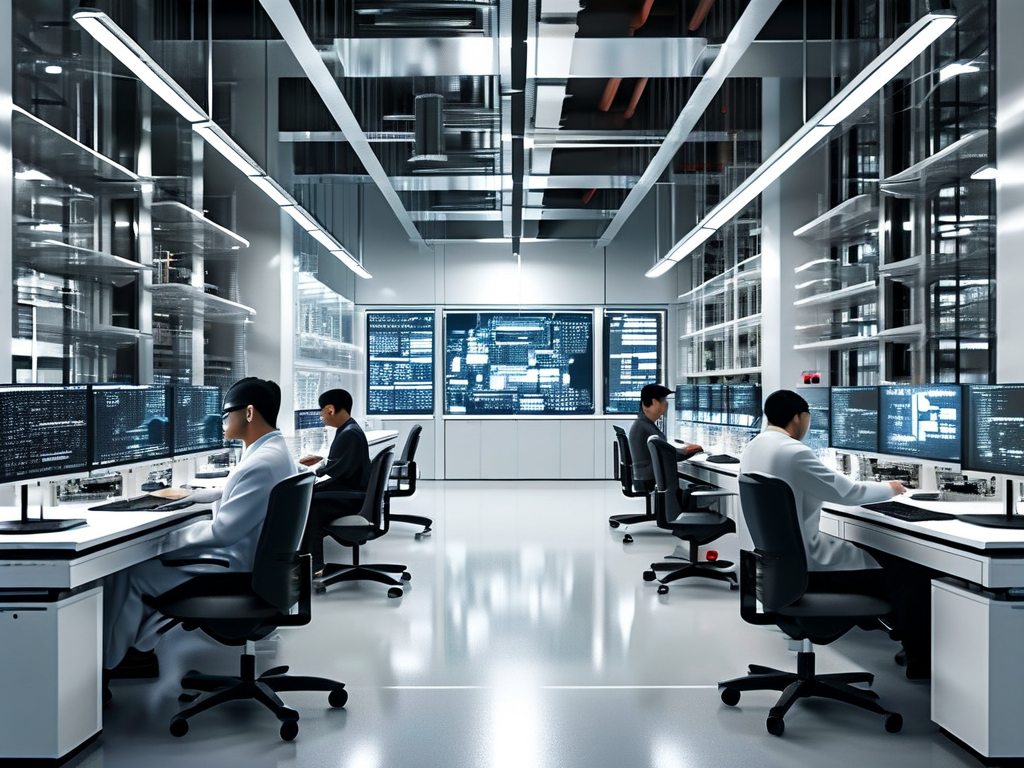As a hub for technological advancement in central China, Nanchang has emerged as a pivotal player in embedded system development. This article explores how local enterprises and research institutions are reshaping the landscape of hardware-software integration while addressing real-world challenges.
The Rise of Embedded Solutions in Nanchang
Nanchang’s embedded system sector thrives on its unique blend of academic expertise and industrial pragmatism. Institutions like Nanchang University’s School of Information Engineering collaborate with firms such as Jiangxi Hongdu Aviation Group to prototype IoT-enabled aviation maintenance systems. A recent project implemented CAN bus protocols for real-time sensor data analysis, reducing aircraft downtime by 18% through predictive maintenance algorithms.

Local startups are leveraging RISC-V architecture to bypass international chip restrictions. One case study reveals how Nanchang-based Ruixin Electronics customized a low-power embedded controller for agricultural drones using FreeRTOS. Their design achieved 72-hour continuous operation through optimized task scheduling – a 40% improvement over previous ARM-based solutions.

Hardware-Software Co-Design Practices
Nanchang’s developers emphasize hardware-aware programming. A common approach involves:
void power_optimize() {
__HAL_RCC_GPIOA_CLK_DISABLE(); // Disable unused peripherals
HAL_PWR_EnterSLEEPMode(PWR_MAINREGULATOR_ON, PWR_SLEEPENTRY_WFI);
}
This code snippet illustrates typical power management techniques in smart meter designs from Nanchang Power Grid Research Institute. By integrating such firmware optimizations with energy-harvesting hardware, their systems achieve 5-year battery lifespans in outdoor installations.
Challenges and Breakthroughs
While facing component shortages, Nanchang’s engineers developed FPGA-based reconfigurable platforms. The Hongdu Intelligent Equipment Lab recently demonstrated a field-upgradable PLC system using Lattice Semiconductor chips. This flexibility allows manufacturers to adapt embedded controllers to evolving industrial standards without hardware replacement.
Thermal management remains critical for compact designs. Through partnerships with Southeast University’s thermal dynamics team, Nanchang Embedded Solutions Co. engineered a passive cooling system for railway signal controllers. Their aluminum-nitride composite substrate maintains junction temperatures below 85°C in confined spaces – a 22°C improvement over conventional solutions.
Educational Initiatives Driving Innovation
Nanchang’s technical colleges have revamped curricula to bridge the embedded skills gap. The Jiangxi Polytechnic Institute now offers project-based courses featuring STM32H7 microcontrollers and Zephyr RTOS. Students routinely participate in national competitions, with a team recently winning honors for a LoRaWAN-enabled environmental monitoring system using custom PCB layouts.
Future Directions
The city’s 2025 roadmap prioritizes AI-embedded convergence. Early experiments at Nanchang High-Tech Zone integrate TinyML frameworks with NXP i.MX RT crossover processors. One prototype smart camera achieves 95% accuracy in defect detection for local electronics assembly lines while consuming under 2W.
As edge computing demands grow, Nanchang’s developers are pioneering hybrid architectures. A notable example combines Xilinx Zynq MPSoC with lightweight Kubernetes clusters, enabling distributed machine vision systems for smart city applications. Initial deployments in the Ganjiang New District process traffic data with 200ms latency – meeting strict ITS requirements.
This dynamic ecosystem positions Nanchang as a crucible for embedded innovation, blending traditional engineering rigor with adaptive problem-solving. From power-efficient firmware to ruggedized hardware, the city’s technical community continues to deliver solutions that balance performance, cost, and reliability in an increasingly connected world.









